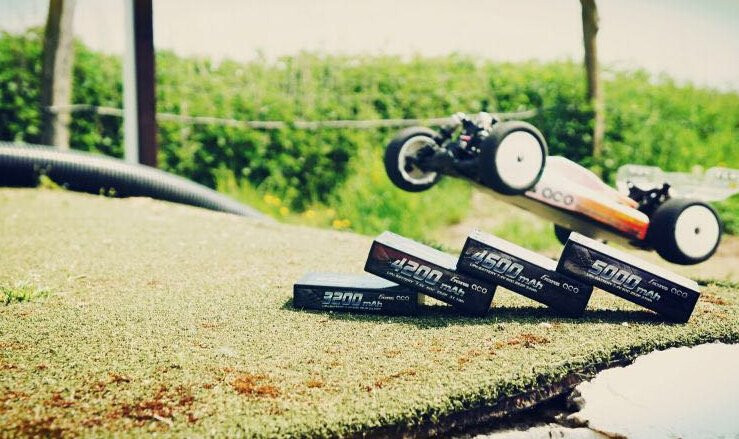How to Choose a Lipo Battery For RC
Jan 4th 2016
Choosing the correct Lipo RC battery for your model involves many factors, and you must first have an idea of the voltage and amp requirements of the motor/prop combination that you intend to use. This article guides you through the thought processes involved in choosing one or more batteries for your RC models. There are a number of factors to consider when it comes to choosing a battery pack. Before making a purchase, think about these points:
* Voltage * Capacity * Weight * Physical Size * Connector * Discharge * Charging Rate
Battery Voltage (S)
All Lithium Polymer cells have a nominal voltage of 3.7v per cell. When fully charged a LiPo cell should be 4.2v and when discharged it should never be below 3v. You will notice that LiPo packs are made up of layers of multiple cells. A 1S = 1 cell (3.7v). If the LiPo pack is listed as being 3S this means it is 3 cells x 3.7v (per cell) which is 11.1v (3s 11.1v lipo battery). It has 3 layers of 3.7v each. The rating for each cell is always referenced by its nominal voltage (3.7v), NOT the maximum voltage (4.2v).
Capacity (mAh)This is usually the biggest or most obvious rating shown on the LiPo pack and is measured in mAh (Milliamp/hour) or Ah(Amp/hour). The capacity is an important factor to consider. Think of capacity (mAh) as the amount of fuel in your car's fuel tank. A higher capacity tank will run your car for longer. 55 amps is the maximum safe current a motor can draw from this battery.
The mah rating: 2200mAh is 2200 milliamp hours or 2.2 amp hours. That is the amout of energy the battery can hold. This battery will give 2.2 amps of current for one hour. Or 4.4 amps for 1/2 hour, or 8.8 amps for 15 minutes.
Weight
A 25c 2000mah Lipo battery can weigh from 170 grams to 270 grams depending on the brand and model number. When you look to buy a battery, weight should be one of the thins you look at. Some 1600mah batteries weigh as much as some 2200mah batteries. A batteris has a huge effect on the planes power to weight ratio. Two extra ounces will make a big difference in your planes performance. Jets need a better than 1 to 1 power to weight ratio to perform like a jet.
Physical Size
For a battery to be right for your model it must fit within the model’s battery compartment. Not all batteries are the same size. While most manufacturers try to stay consistent in sizing, the dimensions can still be quite a bit different. Sometimes a 2mm difference in size might keep it from fitting in your model.
Battery Connectors
Soldering battery connectors can be a real pain, so it is a good idea to try find a battery connector that you like, and stick to it. That allows you to swap batteries easily, and if you decide to build another drone in the future you can use the same batteries.
Discharge (C)
Discharge is the amount of power the battery can supply your power system. The 'C' rating is an multiplication of the capacity. Example: A 20C battery can discharge at 20 x 2,000mAh which is 40,000mAh or 40Amps. This is an important number to consider. It's always good to use a wattmeter to measure the demand of your system. The millamp hours divided by 1000, times the C rating, equals the maximum continuous discharge amperage the battery is capable of sustaining. That's mah/1000 x C = Amps. So 2200mah/1000 x 25C = 55Amps.
The Charge Rate
Some batteries will display a 'C' rating for charging. MOST batteries are rated at a 1C charge rate. The formula is this: XXXX mAh / 1000 x (Charging C rating) = XX amps
For example: If you had a 2200mAh LiPo pack with a charge rating of 2C you would not want to charge the battery at rate more than 4.4 amps.
It’s the lower amperage you charge your batteries, the longer they will take to charge. However, a slower charge is always better for the health of your battery. If you have the time... take it slow. If you can't find charge rating on your battery, then play it safe and charge at 1C.
Hard or soft?
Normally LiPo batteries come in two different forms: as soldered packs wrapped in shrink wrap or as so called hardcase packs that feature an outer plastic box to protect the cells.
If you just bash or race non-sanctioned races softcase (shrink-wrapped) packs are ok as long as you make sure that there is no possibility to damage them during use. Damage can be done by rocks, stones, wood and basically everything that you can find off-road. In this case hardcase packs are the way to go. When your model is equipped with an enclosed battery compartment shrink-wrapped are ok too.
If you have any other ideas about choosing lipo battery, please leave your ideals here, we are glad to hear from you. Otherwise, Enjoy! Hope this helps you!


